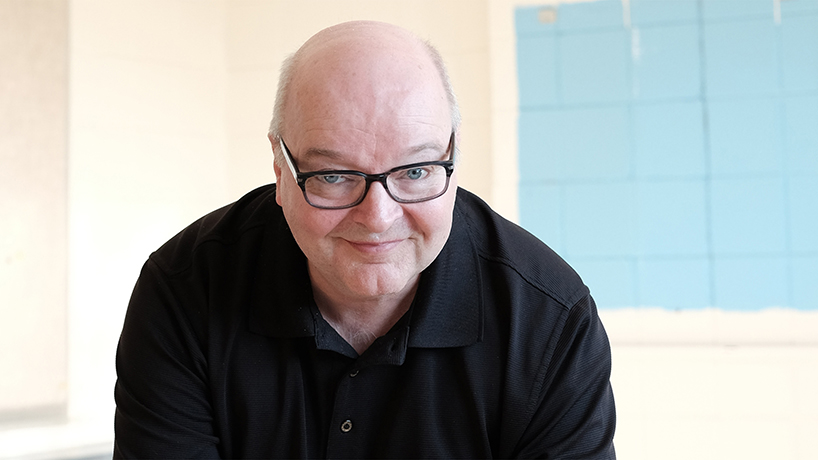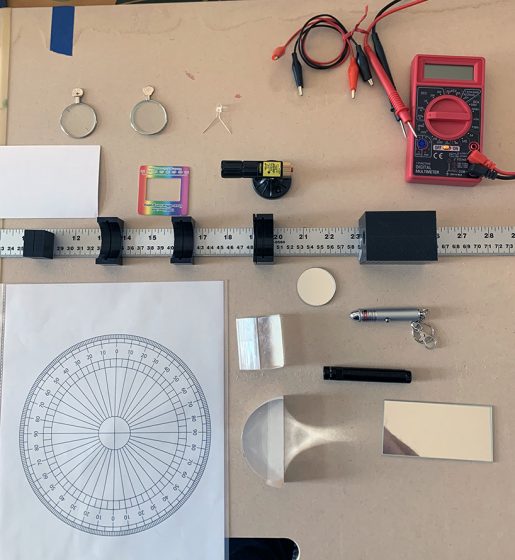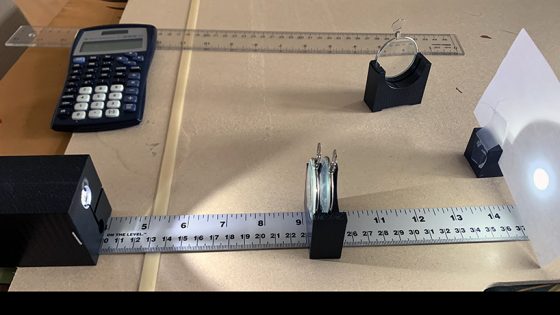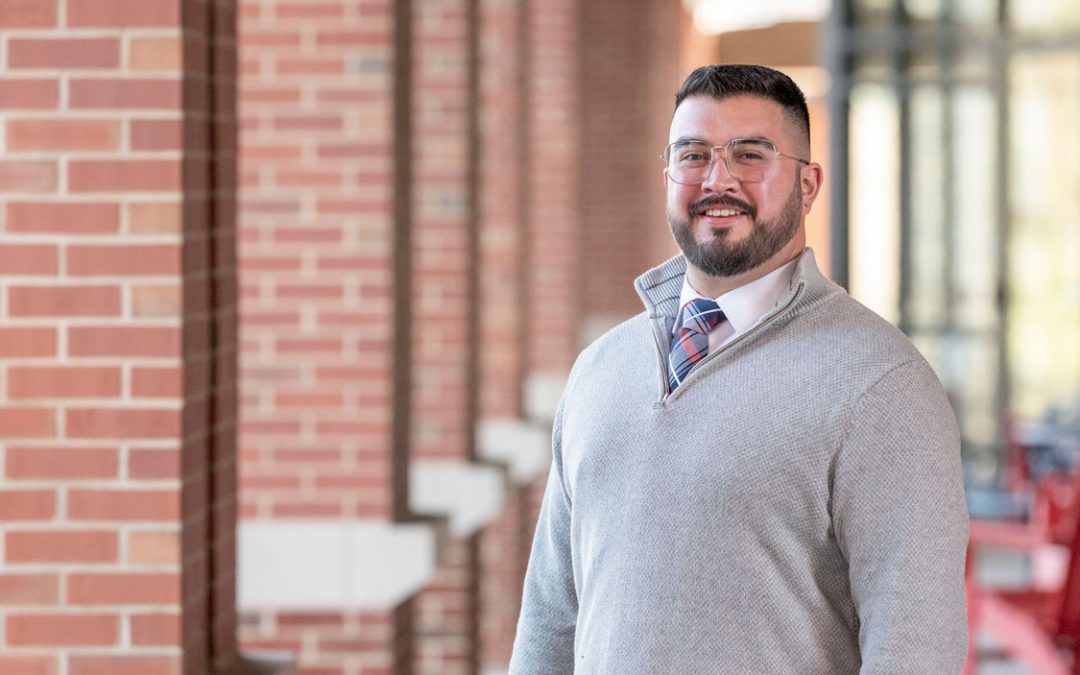
Curators’ Distinguished Teaching Professor Carl Bassi created a $50 optics kit for his College of Optometry students to use while learning virtually. (Lead photo by August Jennewein. Subsequent photos courtesy of Carl Bassi.)
It was quickly apparent to Carl Bassi that nothing available would work.
The Curators’ Distinguished Teaching Professor and director of research in the College of Optometry at the University of Missouri–St. Louis had investigated every decent-seeming commercially available optics kit to test to use for virtual learning. But everything was either a flimsy kit meant for home schooling or a pricy yet incomplete option. Nothing could be used to perform the range of experiments he normally led his optics sequence students through.
There was only one option left: he’d have to make his own.
“The initial idea was that I might try to modify one of the sets that was available,” he said. “As I kind of got further and further into it, I realized that it would be better to start from scratch.”
Bassi dived in, contacting colleagues at other universities and investigating the literature. He scoured the internet for materials and enlisted College of Optometry peers such as the adept machinist Michael Howe, senior research engineering technician.
Ultimately, Bassi created a kit that blew those prefab ones out of the water. One of the best parts was the cost: $50.
To do so, Bassi had dipped into practices gained over the summer from UMSL’s Center for Teaching and Learning’s “Resilient Course Design.” The CTL, which is celebrating its 20th anniversary this academic year, offers such instruction to help fulfill its mission of supporting the professional development of faculty and students through a variety of programs.
A noted researcher and teacher, Bassi could have gotten away without taking the course after the campus went remote to help stop the spread of coronavirus last spring semester. But that would have gone against his inquisitive nature.
“In part, I just wanted to see if I could learn something new,” Bassi said. “Certainly, one of the things I think that has been good is there’s been a lot of support from the campus in trying to set these kinds of things up. Maybe one of the best things about the course was to put timeframes on things.”
The CTL course served as a solid jumping off point for Bassi as he started to plan his fall optics sequence class, which teaches basic optics that serves as the foundation for understanding lenses, prisms and mirrors. During the spring semester, he’d brought home an optics bench and taught through demonstrations on Zoom but felt the normal interactive elements sorely missed.
After working through the variety of subpar commercial kit offerings, Bassi’s breakthrough came when he recalled what the students already had on hand: a trial lens set. That set would save money, since purchasing individual lenses turned out to be prohibitively expensive, and it would give students experience using their lenses earlier than in the normal curriculum.
“I ended up reverse engineering starting with those trial run sets and then building out,” he said. “‘What do you need to get those problem sets to work for an optics lab, then what other kinds of things can we add on to all these other experiments?’”
Bassi turned the process of developing the best, cheapest kit into something of a game for himself by searching for unconventional materials to include.
He chose a piece from a circular saw for measurements and a meter stick for the “bench.” The memory of a past cat’s love for chasing the light from a flashlight had Bassi ordering a variety of laser cat toys after their human toy equivalents proved to be too flimsy. One of these cat toys ultimately became the source for laser diffraction and prism experiments.
Howe made parts for the bench on a Bridgeport milling machine and precision lathe, and he and Bassi have since created a plan for 3D printed versions.
“Michael Howe is one of the most amazing people I know,” Bassi said. “You can have an idea, and he can take these ideas and make them into things or and come back and say ‘No, I want to do this, or what if we try that.’ The idea with the 3D printing is to either be an alternate replacement as things need replacing but, also, I’m hoping to submit this for publication, and people are more likely to have access to a 3D printer than a milling machine and lathe.”
Bassi and Howe produced 49 kits for the optometry students that were used in the fall semester and will be used in the spring as well. Bassi was able to lead the students through all of the experiments he’d have been able to do in the classroom and a few new ones.
But that doesn’t mean he is finished innovating. Bassi is thrilled to be adding onto the kits’ capacity with a homemade photometer alternative created from an LED.
“I had fun optimizing this other way of making light measurements,” he said. “LEDs also work so that if you shine a light on them, they produce a small voltage. That’s what we’re doing, we’re measuring that voltage. With multimeters being so inexpensive, what used to be a $400 component is now $6.”
A moment of light came during the semester from St. Louis entrepreneur Ray Barrett, whose idea for guidelines on golf balls that Bassi helped test ultimately became the Triple Track golf ball now produced by golf giant Callaway. When Barrett heard about the kits, he stepped up and generously donated enough to cover the costs and take the financial burden off of students.
Though Bassi still prefers to teach in person with an optical bench, he sees the benefit to the kits that goes beyond simply making things work.
“I can think of two things for sure that came of it that are positive for the students,” he said. “One is if you strip things down to their simplest forms, sometimes that’s the hardest thing to do. But if you’re able to do that, then it’s easily understandable. I ended up thinking of ways I’m going to be teaching better and teaching differently than what I’ve done in the past. The other thing is that you know everybody’s doing it. Everybody is involved in the process. I really liked that part, too.”














